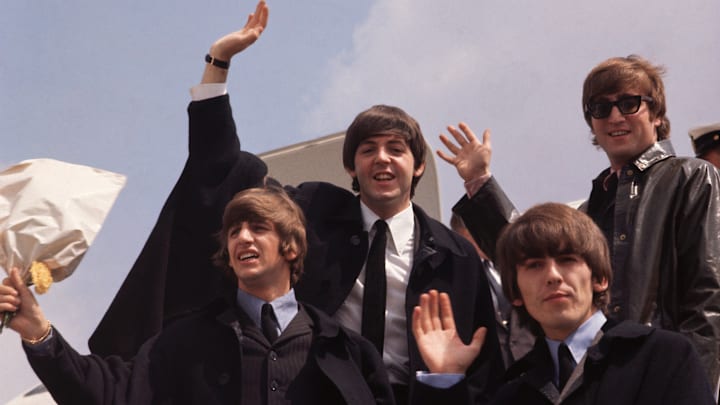The canon. The official Beatles canon. If mankind had spent a fraction of the time debating what is and is not part of the official Beatles canon on other pursuits, we would have solved climate change and cured cancer by now. Had we not focused so much of our collective brain power analyzing the details of multiple international labels on about a dozen different albums, we’d have flying scooters and talking gerbils. Long story short, we care about the canon.
And we should. It helps fans old and new see their way through a morass of recordings and reconfigurations that defined the parameters of mature rock & roll music through its most formative years. The Beatles released a dozen original albums in the UK during their surprisingly brief run (albums released between 1964 and 1970).
They also released a lot of singles, which in turn led to a lot of what we now designate as compilation albums, designed to put those singles onto LPs. Albums were rejiggered, renamed, and at times remixed for release in countries across the world. These compilations were released before the breakup in 1970 and continued unabated after. It’s more than a half century later and repackaging is still going on.
Ranking all the Beatles albums from worst to the best
So how do we go about ranking the Beatles albums? What qualifies to even be ranked? For the most part, we’ll stick to the canon. That typically includes the 12 original UK releases, along with one additional release that wasn’t technically a full album but was about as close as you can get. That gets us to thirteen.
But I’m going to rank 14. Philistine American that I am, I’m going to include an American release which is a real point of contention amongst the more rabid fans. (Actually, I’m ranking two American releases, but the other one overlaps mightily with the original UK recording.)
So we’ve got 14 albums full of original Beatles material to consider. I will not be considering post-breakup compilations, though there are many outstanding entries in that field. For novices who may just want a thorough overview, the “Red” and the “Blue” albums released in 1973 are spectacular. If you’re a completist – the type who insisted on watching every season of How I Met Your Mother, for instance - then 1988’s Past Masters is for you.
For fans interested in trying to understand the live experience of a Beatles show, The Beatles at the Hollywood Bowl (1977) captures the band in the process of becoming the biggest cultural force in the world. And the Live at the BBC (1994) double album is a sensational collection of early recordings done for the BBC that offers massive doses of personality – the highbrow wit and silly schoolboy pranks that characterized the Fab Four.
For a really fascinating look at the early live shows, check out the footage from their very first US performance on February 11, 1964, in my hometown, Washington, DC. It's a quick, energetic set full of mishap and mayhem, and some otherworldly early rock & roll. Fortunately, it was recorded and remains easy to find on YouTube.
You clearly have a lot to choose from. For now, let’s simply countdown, from worst to best, the albums in the canon (with a couple addenda included.)
14. Yellow Submarine (1969)
The animated movie Yellow Submarine was the fourth and final fiction film all four Beatles took part in before the breakup. As a movie, it’s quite good, often praised as a ground-breaking animated feature. As an album, it’s mostly forgettable.
Side two is devoted to Beatles’ producer George Martin’s orchestral pieces that appear in the film. That leaves the first side for original Beatles songs. It has six songs, and three of them are forgettable.
The two George Harrison compositions – the modest “It’s All Too Much,” and the negligible “It’s Only a Northern Song,” which simply repurposes “If I Needed Someone” with some Eastern tinges – work better in the context of the film than as stand-alone songs. That is even more true of Paul McCartney’s childishly silly “All Together Now.”
That leaves basically three songs – the title track, “Hey Bulldog” and “All You Need is Love” as the only things worth listening to. And the song “Yellow Submarine” had already been released on 1966’s Revolver.
Best tracks: “Yellow Submarine,” “Hey Bulldog,” “All You Need is Love”
